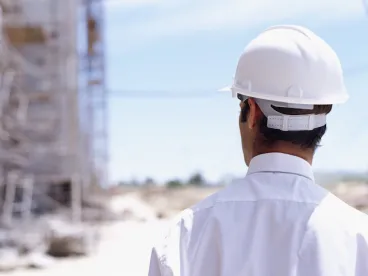In response to COVID-19, state and local governments are issuing orders suspending “non-essential” business. At this point in the COVID-19 pandemic, construction work is often included on the list of essential business, particularly if it relates to utilities, telecommunications, transportation, and healthcare infrastructure. Companies may want to check the state and local orders in place in each jurisdiction where they are currently operating to determine if a construction project may continue.
For ongoing projects, here are tips a general contractor may want to consider:
-
Communicate with the owner regarding COVID-19.
General contractors may want to immediately review their contracts, particularly the sections regarding force majeure and making claims for unanticipated delay. Follow all notice requirements as soon as possible, by providing the owner with all available information on (a) the extent to which the project is being affected by COVID-19; (b) the steps the general contractor is taking to proceed with the work in a safe manner, or, if necessary, to temporarily suspend work; and (c) the ways in which COVID-19 is affecting or may affect the project cost and schedule.
This is no guarantee that the general contractor won’t have to bear at least some of the COVID-19-caused increases to the project costs and impacts to the schedule, but following notice requirements may at least prevent any future claims of lack-of-notice. If the owner decides to suspend work, meanwhile, promptly follow all contractual requirements regarding work suspension. It is also helpful to notify the owner of additional precautions in place in response to the COVID-19.
-
Develop and implement an infectious disease preparedness and response plan.
Consider tailoring the plan to meet business needs, but generally also consider controls necessary to address risks of COVID-19 exposure at the worksite, including identification of: (a) potential areas of increased exposure risk (e.g., common gathering places with common surfaces and areas where workers must work in tight quarters); (b) nonoccupational risk factors at home and in community settings; and (c) workers’ individual risk factors (e.g., older age; chronic medical conditions, including immunocompromising conditions; and pregnancy). General contractors may also want to develop the plan so that it is educational and provides clear guidance to workers on how to obtain more information and report questions or concerns.
-
Communicate with subcontractors regarding COVID-19.
Before contacting subcontractors, review the subcontractor agreements and identify material terms, such as provisions regarding health and safety; compliance with federal, state, and local laws; and any project completion deadlines. In communications with subcontractors, confirm the general contractor’s compliance with COVID-19 guidance issued by the U.S. Centers for Disease Control and Prevention (CDC), including that the general contractor actively encourages sick employees to stay home, and that subcontractors also comply with guidance from the Department of Labor’s Occupational Safety and Health Administration and Wage and Hour Division. Consider providing subcontractors an avenue to report to the general contractor’s suspected COVID-19 exposure at the job site.
-
Modify job rules to facilitate social distancing.
This may include restricting how many subcontractors may work on a particular job at a time, as well as restricting rotational working hours. It may also include discontinuing job-provided lunches, shared pens for jobsite sign-ins, and in-person meetings in tight spaces, such as job trailers. Consider holding toolbox and other safety meetings in an outdoor space with all employees standing at least six feet apart. Consider restricting worksite access only to individuals who are essential for the project.
-
Increase availability of handwashing stations and disinfectant wipes.
In addition to increasing the stations and supplies, follow the CDC’s recommendations to post CDC health promotion materials regarding COVID-19. The CDC also recommends wiping down with disinfectant wipes high-contact areas and shared tools, and encouraging respiratory etiquette, including covering coughs and sneezes.
-
Spot and react to symptoms.
General contractors may want to train project managers or supervisors and other employees to spot symptoms of possible infection in coworkers or subcontractors’ employees. Consider implementing a “see something, say something” mindset. In response to identified symptoms, the general contractor may want to exclude the symptomatic employee, communicate the exclusion to the subcontractor (if applicable), and require medical clearance before allowing the employee to return to the job.
-
Provide education on the Families First Coronavirus Response Act (FFCRA).
Effective April 1, 2020, the FFCRA will go into effect, changing the legal requirements related to employee benefits and leaves of absence. In addition to determining whether the general contractor is subject to the FFCRA, the general contractor may want to consider notifying its subcontractors of this new employment law obligation.





 />i
/>i

